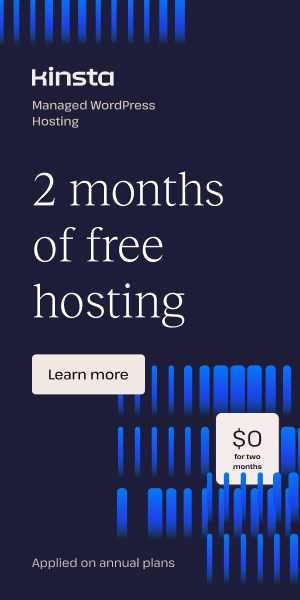How Figma to WordPress Conversion Supports Dynamic Content
If you’re designing modern, engaging websites, you already know that dynamic WordPress content is no longer a luxury—it’s expected. Users and clients demand real-time updates, interactive experiences, and seamless integration between design and development. This is where the journey from Figma to WordPress becomes truly transformative, and services like Figma2WP Service are at the forefront of this evolution.
Why Dynamic Content Matters for Modern Websites
Today’s web users are more sophisticated than ever. They expect websites to be fast, interactive, and—perhaps most importantly—dynamic. Static sites, with their fixed layouts and content, simply don’t cut it for brands that want to stand out, launch seasonal campaigns, or deliver real-time news updates. Dynamic WordPress content allows you to automate updates, schedule posts, personalize user experiences, and deliver fresh, relevant material without constant manual intervention.
Imagine a holiday campaign that goes live exactly at midnight, or a news portal that updates breaking stories as they happen. These scenarios are only possible when your website is powered by content that changes in real time, driven by both user interaction and automated scheduling. This level of interactivity is what separates forgettable websites from memorable digital experiences.
Figma as the Foundation for Dynamic Web Experiences
Figma has become the industry standard for digital design, offering collaborative tools, responsive layout options, and robust prototyping features. Designers love Figma for its flexibility and real-time collaboration, but the true power comes when these designs are brought to life as Figma to WordPress dynamic websites.
When you design in Figma, you’re not just creating static mockups—you’re building the blueprints for interactive, responsive, and animated interfaces. However, to realize this potential, your Figma designs must be converted and integrated with a platform that can handle dynamic content and user engagement. That platform is WordPress, the world’s most popular CMS.
From Static to Interactive: The Conversion Process
The process of converting Figma to WordPress is more than just “exporting” a design. It’s about preserving the interactivity, responsiveness, and visual fidelity of your Figma prototype while unlocking the full power of WordPress’s content management capabilities.
- Design Fidelity: Skilled developers ensure that every pixel, animation, and interactive element from your Figma file is faithfully recreated in WordPress.
- Theme Development: Your design is converted into a custom WordPress theme, complete with template files, stylesheets, and scripts.
- Content Integration: Dynamic content areas—such as blog feeds, product listings, or event calendars—are mapped to WordPress’s native content types and custom fields.
- Plugin Integration: Essential plugins, such as Elementor or WP Auto Schedule, can be added to enable advanced scheduling, real-time updates, and interactive widgets.
Leveraging WordPress Plugins for Dynamic Content Scheduling
One of the most powerful aspects of WordPress is its plugin ecosystem. When combined with a custom Figma-to-WordPress theme, these plugins can supercharge your site’s ability to deliver dynamic WordPress content.
Elementor: Drag-and-Drop Interactivity
Elementor is a leading page builder for WordPress that allows you to create complex, interactive layouts without touching code. With Elementor, you can add dynamic widgets, schedule content updates, and even create conditional displays based on user behavior. When your Figma design is converted to WordPress, Elementor can be used to maintain the visual integrity of your layout while adding sophisticated interactivity.
WP Auto Schedule: Automated Content Management
For sites that require frequent updates—such as news portals, blogs, or promotional campaigns—WP Auto Schedule is invaluable. This plugin automates the scheduling and publishing of posts, allowing you to plan your content calendar in advance and ensure timely, automated updates. Content can be prepared in Figma, converted to WordPress, and then scheduled for publication with precision timing—all without manual intervention.
Custom Plugins and Integrations
Beyond off-the-shelf solutions, custom plugins can be developed to support unique interactive features. For example, real-time notification systems, personalized content feeds, or interactive maps can be integrated directly into your Figma-inspired WordPress theme. These integrations are especially valuable for e-commerce, education, or media sites where user engagement is critical.
How Figma Integration Powers Real-Time Design Updates
One of the most compelling reasons to choose Figma to WordPress dynamic conversion is the potential for real-time design synchronization. By embedding Figma prototypes directly into your WordPress site—using Figma’s native embed feature—you can showcase live design updates to clients and stakeholders without manual re-uploads or version control headaches.
This approach is ideal for agencies and designers who need to present ongoing work, gather feedback, or demonstrate interactive prototypes. With each design iteration in Figma, the embedded preview on your WordPress site updates automatically, streamlining the review process and reducing miscommunication. For more on embedding, see this detailed guide.
Case Studies: Dynamic Content in Action
To understand the real-world impact of Figma to WordPress dynamic integration, let’s look at a few scenarios where this workflow delivers tangible results.
Seasonal Campaigns for E-Commerce
A fashion retailer wants to launch a Black Friday sale with countdown timers, animated banners, and dynamically updated product grids. The design team creates these elements in Figma, ensuring pixel-perfect layouts and smooth animations. The Figma2WP Service team converts the design into a WordPress theme, integrating WooCommerce for product listings and Elementor for interactive widgets. The marketing team then uses WP Auto Schedule to automate the launch of the campaign precisely at midnight, triggering countdowns and updating banners without manual intervention.
The result? A visually stunning, highly interactive campaign that captures attention and drives conversions—without last-minute scrambles or technical hiccups.
Real-Time News Portals
A local news outlet needs to update its homepage with breaking stories throughout the day. The editorial team prepares article layouts in Figma, which are then converted to WordPress by Figma2WP Service. The site uses WordPress’s native scheduling features to publish stories at specific times, and custom plugins pull in real-time data feeds for weather, traffic, or stock updates. Editors can preview changes in Figma, see them reflected instantly on the live site, and schedule content for future publication—all from a single, streamlined workflow.
Interactive Educational Platforms
An online education platform wants to deliver personalized course dashboards, interactive quizzes, and progress trackers. The UX team designs these interfaces in Figma, focusing on animations and user feedback. After conversion to WordPress, developers integrate LearnPress or LifterLMS for course management, plus custom plugins for interactivity. The result is a dynamic, engaging learning environment that adapts to each student’s progress and delivers real-time feedback.
Best Practices for Dynamic Figma to WordPress Projects
Maximizing the value of your Figma to WordPress dynamic conversion requires careful planning and execution. Here are some best practices to ensure success:
- Collaborate Early: Involve both designers and developers from the start. This ensures that interactive elements designed in Figma can be faithfully implemented in WordPress.
- Leverage Auto Layout: Use Figma’s Auto Layout features to create responsive designs that adapt seamlessly to different screen sizes. This reduces development time and ensures consistency across devices.
- Test Thoroughly: Before launching, test your theme on multiple devices and browsers. Make sure that dynamic content, scheduled updates, and interactive features work flawlessly.
- Plan for Scalability: As your site grows, ensure that your WordPress backend and hosting environment can handle increased traffic and complex functionality. Consider managed WordPress hosting from providers like Kinsta for optimal performance.
- Iterate and Improve: Use analytics tools to track user engagement with interactive elements. Gather feedback and refine your design and content strategy over time.
Future Trends: AI and Automation in Figma to WordPress Workflows
The future of Figma to WordPress dynamic integration is being shaped by artificial intelligence and automation. Services like Yotako are pioneering AI-powered tools that can convert Figma designs into WordPress themes with minimal manual intervention. These tools analyze your Figma file, generate clean code, and even suggest improvements for interactivity and responsiveness.
While AI can’t yet replace the nuanced touch of a skilled developer for complex projects, it’s transforming the landscape for simpler sites and accelerating the delivery of dynamic WordPress content. Expect to see more AI-driven plugins and services that further streamline the design-to-development pipeline, making interactive website creation faster and more accessible.
Choosing the Right Partner for Your Project
The quality of your Figma to WordPress dynamic conversion depends heavily on your development partner. Look for a team with deep expertise in both Figma and WordPress, a portfolio of interactive projects, and a commitment to ongoing support. At Figma2WP Service, we combine design thinking with technical excellence to deliver pixel-perfect, fully interactive WordPress sites—on time and on budget.
Whether you need a custom theme, advanced plugin integrations, or ongoing maintenance, our team is ready to help you unlock the full potential of your Figma designs in WordPress. Contact Us today to discuss your project and see how we can bring your interactive vision to life.
Conclusion: The Power of Dynamic, Interactive Websites
In the competitive digital landscape, a static website simply isn’t enough. Users expect immersive, interactive experiences that adapt to their needs and deliver real-time value. By converting your Figma designs to WordPress and leveraging the power of dynamic WordPress content, you can create websites that engage, inform, and inspire your audience.
From seasonal campaigns to real-time news feeds and personalized learning platforms, the possibilities are limited only by your imagination—and the expertise of your development partner. With the right tools, workflows, and support, your Figma-to-WordPress journey can deliver not just a website, but a dynamic digital experience that sets your brand apart.
Ready to take the next step? Visit Figma2WP Service to explore our portfolio, learn about our process, and start your project today. For personalized advice, reach out to our team—we’re here to help you succeed in the era of interactive, dynamic web design.
More From Our Blog
Unlocking the Power of Hands-On Web Design with Modern Tools In today’s digital age, the ability to craft your own website has transformed from a daunting technical challenge into an engaging creative process accessible to enthusiasts, DIYers, and professionals alike. Services like Figma2WP Service empower you to convert your design concepts into fully functional WordPress Read more…
Elevate Your Outdoor Presence with Cutting-Edge Garden Themes for WordPress Creating a captivating online presence for gardening businesses or outdoor-focused sites demands a skilled blend of aesthetics, functionality, and thematic relevance. This is where garden themes for WordPress shine—offering visually rich, user-friendly templates tailored to beautifully showcase plants, gardening products, and outdoor lifestyles. With the Read more…


